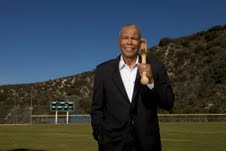Visits: 0
As you continue taking steps toward becoming a successful hitter, one of the crucial steps is actually making a stride.
In your quest for contact, the purposes of the stride are many. For starters, it gets your energies moving in the right direction. It also eliminates a flat-footed swing and balances the weight shift and decreases tension. Of course, you have to find the right stride for you, as an individual hitter.
We all tend to lean toward doing what is most comfortable and it’s important to remember that during batting practice with the GAPHitter. Try out different strides, long and short, to see what best suits you and your body type.
For me, a short stride of about four to six inches was best. A longer stride usually limits your flexibility and can lead to pulling your hands or torso forward, causing you to lunge for the ball.
It’s important to realize you can make big strides as a hitter without actually taking them.
My old teammate on the Minnesota Twins, Harmon Killebrew, was one of the finest power hitters in Major League Baseball history, blasting 573 home runs. And, he did so with one of the shortest strides I’ve ever seen.
Of course, everybody is different. For instance, former California/Anaheim Angels and St. Louis Cardinals standout Jim Edmonds simply could not stop himself from over striding. So, I suggested he not stride at all, instead having him place his front foot in an ideal finishing position, while loading his weight on his back foot and transferring the weight forward in lieu of a stride. Without a stride, Edmonds was a Silver Slugger winner, a four-time All-Star, and hit nearly 400 home runs and 1,200 runs batted in.
Once you decide on the stride you will take, it’s important to stick to it.
You might decide, depending on the opposing pitcher, to set up in different areas and ways in the batter’s box, but your stride should always be headed in the same direction, which is right back at the pitcher.
No matter what stance I took, the length of the stride never varied and my front toe always faced a 45-degree angle. With that angled front toe, you eliminate the tendency to open up too quickly with your hips, forcing your front shoulder to open and the head and eyes to follow. If you’re correctly working your mechanics, the hips, shoulders and head should open naturally, taking your hands through the strike zone in the process.
By the time your front foot hits, the ball is halfway to home plate and you will have made the decision whether to swing or take the pitch. If you take it, just keep your hands back and follow the pitch into the catcher’s glove. But if you decide to swing, well, then it’s time for your hands to go to work and it’s time for the next step … flat-handed hitting.





You must be logged in to post a comment Login